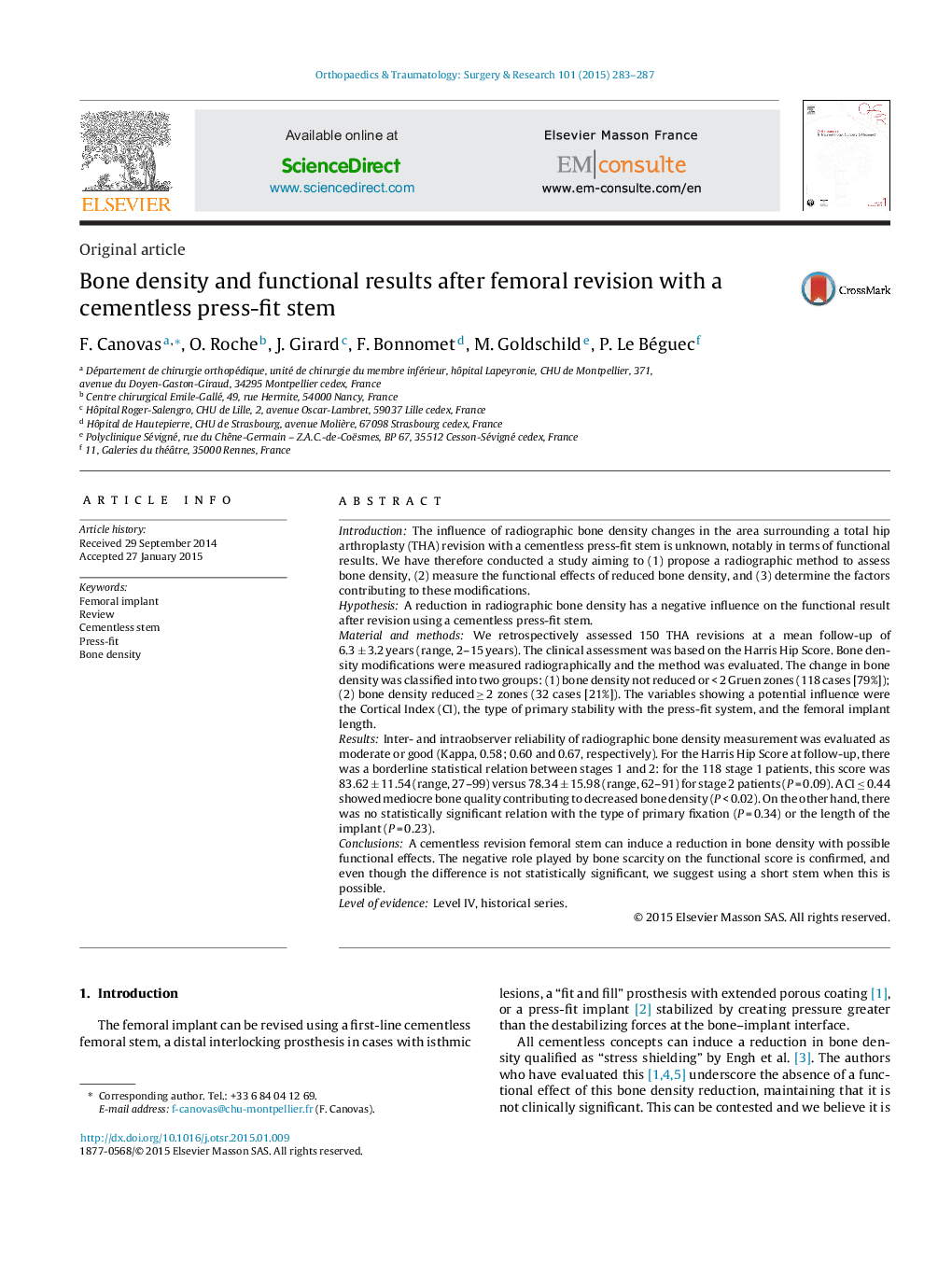| Article ID | Journal | Published Year | Pages | File Type |
|---|---|---|---|---|
| 4081169 | Orthopaedics & Traumatology: Surgery & Research | 2015 | 5 Pages |
IntroductionThe influence of radiographic bone density changes in the area surrounding a total hip arthroplasty (THA) revision with a cementless press-fit stem is unknown, notably in terms of functional results. We have therefore conducted a study aiming to (1) propose a radiographic method to assess bone density, (2) measure the functional effects of reduced bone density, and (3) determine the factors contributing to these modifications.HypothesisA reduction in radiographic bone density has a negative influence on the functional result after revision using a cementless press-fit stem.Material and methodsWe retrospectively assessed 150 THA revisions at a mean follow-up of 6.3 ± 3.2 years (range, 2–15 years). The clinical assessment was based on the Harris Hip Score. Bone density modifications were measured radiographically and the method was evaluated. The change in bone density was classified into two groups: (1) bone density not reduced or < 2 Gruen zones (118 cases [79%]); (2) bone density reduced ≥ 2 zones (32 cases [21%]). The variables showing a potential influence were the Cortical Index (CI), the type of primary stability with the press-fit system, and the femoral implant length.ResultsInter- and intraobserver reliability of radiographic bone density measurement was evaluated as moderate or good (Kappa, 0.58; 0.60 and 0.67, respectively). For the Harris Hip Score at follow-up, there was a borderline statistical relation between stages 1 and 2: for the 118 stage 1 patients, this score was 83.62 ± 11.54 (range, 27–99) versus 78.34 ± 15.98 (range, 62–91) for stage 2 patients (P = 0.09). A CI ≤ 0.44 showed mediocre bone quality contributing to decreased bone density (P < 0.02). On the other hand, there was no statistically significant relation with the type of primary fixation (P = 0.34) or the length of the implant (P = 0.23).ConclusionsA cementless revision femoral stem can induce a reduction in bone density with possible functional effects. The negative role played by bone scarcity on the functional score is confirmed, and even though the difference is not statistically significant, we suggest using a short stem when this is possible.Level of evidenceLevel IV, historical series.
